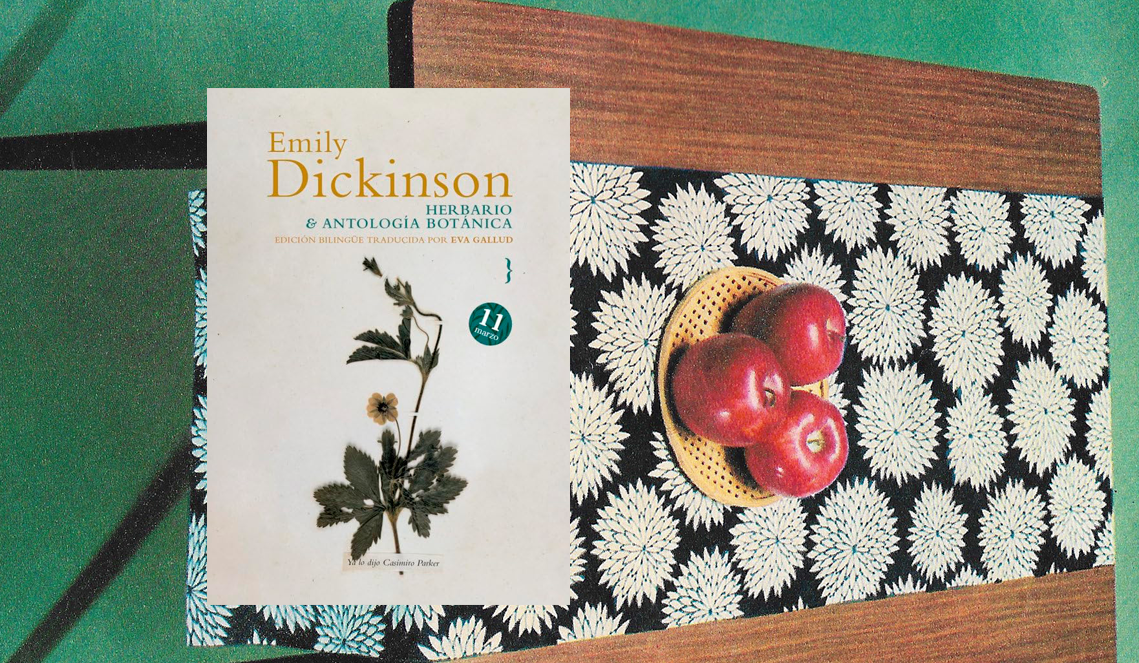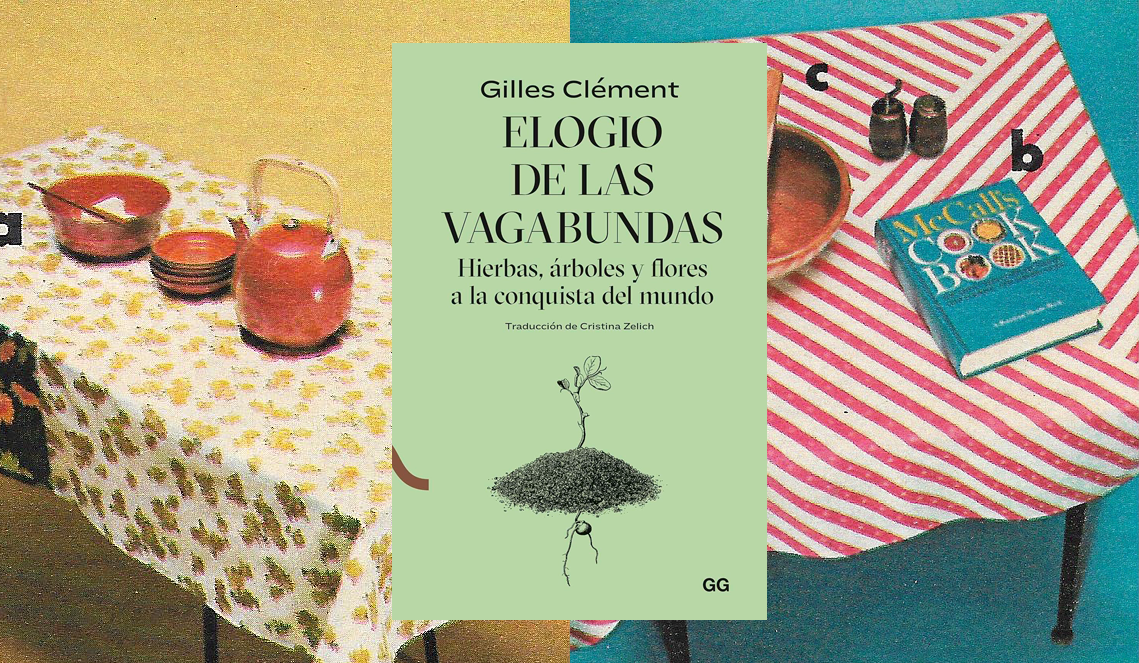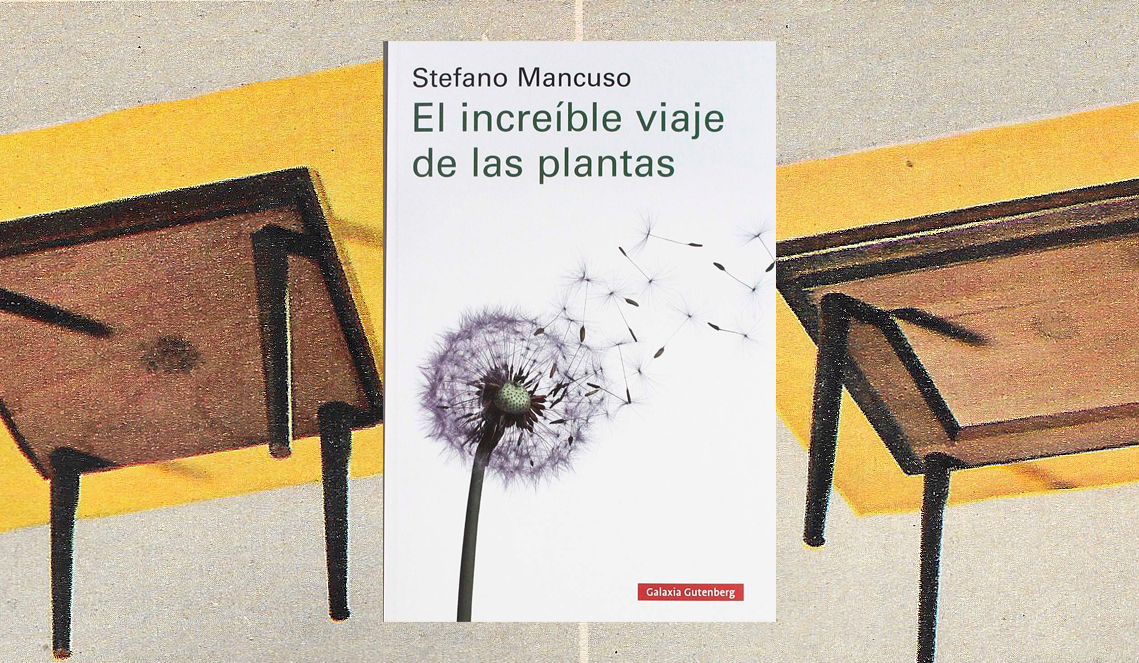
Doa Oa es una muralista y artista de estallidos vegetales.
Doa recupera espacios y pinta edificios colmándolos de enormes flores y frutos, hojas inmensas y otras formas botánicas gigantes. Desde el compromiso político, una mirada propia y el poder popular del arte, su obra genera belleza, paz y nos plantea interrogantes.
Disfrutad de sus recomendaciones y chequead su trabajo. <3
Doa Oa is a muralist and artist of botanical bursts.
Doa reclaims spaces and paints buildings, filling them with enormous flowers and fruits, immense leaves, and other giant botanical forms. With a political commitment, her own perspective, and the popular power of art in public spaces, her work generates beauty, peace, and poses questions to us. Enjoy her recommendations and check out her work. <3

Como tengo el cerebro abducido y controlado por las flores silvestres, todas mis recomendaciones son, en realidad, sus recomendaciones, para ayudar a entenderlas un poco mejor y así quizás algún día podremos ser amigas de verdad, de las que se quieren y no se pisan.
https://doaoa.org/
https://www.instagram.com/doa_oa/?hl=es
Since my brain is abducted and controlled by wildflowers, all my recommendations are actually their recommendations, to help understand them a little better so that maybe someday we can truly be friends—friends who love each other and don't trample one another.


ITEM #1 HERBARIO 6 ANTOLOGÍA BOTÁNICA, EMILY DICKINSON
Este es un libro sobre botánica que me emociona profundamente. Es abrirlo y ya te caíste entre los poemas y el herbario, y dudo mucho que alma que ahí caiga, pueda salir de ahí nunca. No sé si me sulibella más imaginar la vida de Emily recogiendo con sus manitas las flores y hojas, inspirándose mientras vagabundea por los campos al ritmo de los sonidos de la brizna y el viento, la hoja cayendo o una flor que se abre al amanecer; mientras se va parando a escribirles declaraciones de amor, a todas esas amigas silvestres. O la idea fanclub de que esas flores que puedes ver en el herbario son las que ella misma recogió, secó y ordenó, o sea, que sus manos tocaron esas plantitas ahora secas, y es su letra real la que escribió sus nombres en las etiquetas para saber quien era quien. Lloro mucho. Tan precioso e íntimo que me produce derretimiento de corazón.
This is a book about botany that deeply moves me. Opening it is like falling into a world of poems and herbarium, and I doubt that any soul that falls into it will ever want to leave. I can't decide what excites me more: imagining Emily's life collecting flowers and leaves with her hands, inspired as she wanders through the fields to the sounds of the breeze and the wind, a falling leaf, or a flower blooming at dawn; stopping to write love declarations to all those wild friends. Or the fanclub-like idea that the flowers you see in the herbarium are the ones she herself collected, dried, and arranged, meaning that her hands touched those now dried plants, and it's her actual handwriting labeling them, identifying each one. It's so beautiful and intimate that it melts my heart.

ITEM #02 ELOGIO DE LAS VAGABUNDAS, GILES CLÉMENT
Me tranquilizó mucho descubrir a Gilles Clément y su visión más amable sobre las migraciones en el mundo vegetal, cuestionando la rigidez de esa visión humana imperante que se excluye de la naturaleza, como si no formase parte de ella y a la vez pretende ordenarla según sus supuestos principios superiores. Habla sobre los pasaportes que les hacemos a las plantas exóticas, las diferencias de clase entre las que sirven a la humanidad y las que deciden moverse por su cuenta. Para mí, una green flag total, cuando cuestiona las fronteras del jardín planetario y las pretensiones de control del ser humano sobre toda la vida del planeta. Además, te cuenta muchas cosas interesantes sobre un montón de plantas silvestres estigmatizadas, que también tienen derecho a existir. Abracemos también al Cardo borriquero.
I was comforted when I discovered Gilles Clément and his kind view on plant migrations, which questions the rigidity of the prevailing human perspective that excludes itself from nature, as if not part of it, while simultaneously attempting to order it according to his supposedly superior principles. Clement talks about the exotic plants passports, the class differences between plants that serve humanity and those that choose to move on their own. For me, he's a total green flag when he questions the borders of the planetary garden and humanity's pretensions of controlling all life on the planet. Additionally, he shares many interesting things about various stigmatized wild plants that also have a right to exist. Let’s embrace the thistle as well.

ITEM #03 EL JARDÍN DEL PRADO, EDUARDO BARBA GÓMEZ
Siempre me deleito intensamente en los detalles minuciosos de plantas que crecen en muchísimas escenas de pinturas de diferentes épocas, sin ser necesariamente el sujeto principal, que no suelen serlo. Pero cantidad de plantas silvestres y flores diversas siempre han estado ahí creciendo, en las periferias y márgenes de los cuadros, alguna vez entre dedos índice y pulgar en manos, o al lado de los pies de los supuestos protas de las pinturas. Como en la vida misma, y es que creo que es obvio que no podemos vivir sin ellas, aunque a algunes les cueste decirlo en voz alta. Me flipé mucho cuando descubrí este libro de Eduardo Barba, porque por fin alguien te cotillea sobre esas plantas que a simple vista podrían parecer atrezo en muchas obras, pero que en realidad tienen poderosas misiones e importante intención simbólica.
Las historias de Eduardo, me conquistaron ya por completo cuando te descubre el concepto del "plant blindness", que es una propuesta de sesgo cognitivo humano, que consiste en ignorar las especies de las plantas, un poco como percibirlas como si fueran el verde de fondo de las escenas en las que vivimos, el paisaje verde croma. Lo que me abrió una puerta hacia la comprensión de la torpe relación del ser humano y las plantas. Y una buena terapia para trabajarse esa ceguera, es acordarse de sus nombres, fijarse en la diversidad de vidas que llevan, saludarlas al cruzarte con ellas en los caminos, aceras, descampados, bosques, etc. En definitiva, conocerlas un poco más. Y habiendo llegado aquí, para hacer redonda la recomendación, "Una flor en el asfalto". Otro precioso libro también de Eduardo Barba que junto a los dibujos sublimes de Raquel Aparicio, hablan de esas vidas diversas de plantas con nombres y apellidos que crecen libres donde a ellas les apetece. Las malas hierbas son amigas, una vez que las conoces.
I always intensely delight in the meticulous details of plants that grow in many scenes of paintings from different eras, without necessarily being the main subject—they usually aren't. However, many wild plants and various flowers have always been there, growing on the peripheries and margins of the paintings, sometimes between the index and thumb in hands, or beside the feet of the supposed protagonists of the paintings. Just like in real life, and I think it's obvious that we can't live without them, even though some may find it hard to say so out loud.
I was thrilled when I discovered Eduardo Barba's book because finally, someone delves into those plants that might seem like mere props in many works but actually have powerful missions and significant symbolic intentions. Eduardo's stories completely won me over when he introduced the concept of "plant blindness," a proposed human cognitive bias that involves ignoring plant species, a bit like perceiving them as the green background of the scenes in which we live, the green chroma landscape. This opened a door for me to understand the clumsy relationship between humans and plants. A good therapy to work on this blindness is to remember their names, notice the diversity of lives they lead, greet them as you encounter them on paths, sidewalks, wastelands, forests, etc. In short, to get to know them a bit more.
And having come this far, to round out the recommendation, "Una flor en el asfalto" (A Flower in the Asphalt) is another beautiful book by Eduardo Barba. Along with sublime drawings by Raquel Aparicio, it talks about the diverse lives of plants with names and surnames that grow freely wherever they please. Weeds become friends once you get to know them.

ITEM #04 EL INCREÍBLE VIAJE DE LAS PLANTAS, STEFANO MANCUSO
Me encantan las historias que Stefano Mancuso recopila en este libro. Son de esas historias que te dejan con esa sensación de "ya he nacido tarde, ojalá haber sido yo una de esas semillas pioneras y aventureras". Mancuso recopila unas asombrosas e inspiradoras historias de semillas exploradoras que llegan hasta islas recién emergidas en el Atlántico norte, viajeras del tiempo que consiguen germinar después de siglos esperando en improbables condiciones, fugitivas inmóviles que tratan de esquivar accidentes, supervivientes a los mayores desastres nucleares, ... Muchas aventuras e intriga vegetal. Mucha acción, pero con sentimiento y moraleja, pues a través de esas historias se puede comprender mucho de la magnitud del movimiento de unos seres que desde la perspectiva humanocentrista consideramos inmóviles. A mí me encantó descubrir a través de sus textos, aunque no solo los de este libro, como las plantas en realidad no son inmóviles, sino que lo hacen desplazándose en el tiempo, a través de sus semillas. Como un desplazamiento de relevos. Poesía.
I love the stories that Stefano Mancuso collects in this book. They are the kind of stories that leave you with that feeling of "I was born too late; I wish I could have been one of those pioneering and adventurous seeds."
Mancuso gathers some astonishing and inspiring stories of explorer seeds that reach newly emerged islands in the North Atlantic, time travelers that manage to germinate after centuries of waiting in improbable conditions, immobile fugitives trying to avoid accidents, survivors of the greatest nuclear disasters, ... Many plant adventures and intrigues. A lot of action, but with sentiment and a moral, because through these stories, you can understand much of the magnitude of movement of beings that, from a human-centric perspective, we consider immobile. I loved discovering through his texts, although not only in this book, how plants are actually not immobile but move through time via their seeds. Like a relay race of movement. Poetry.
